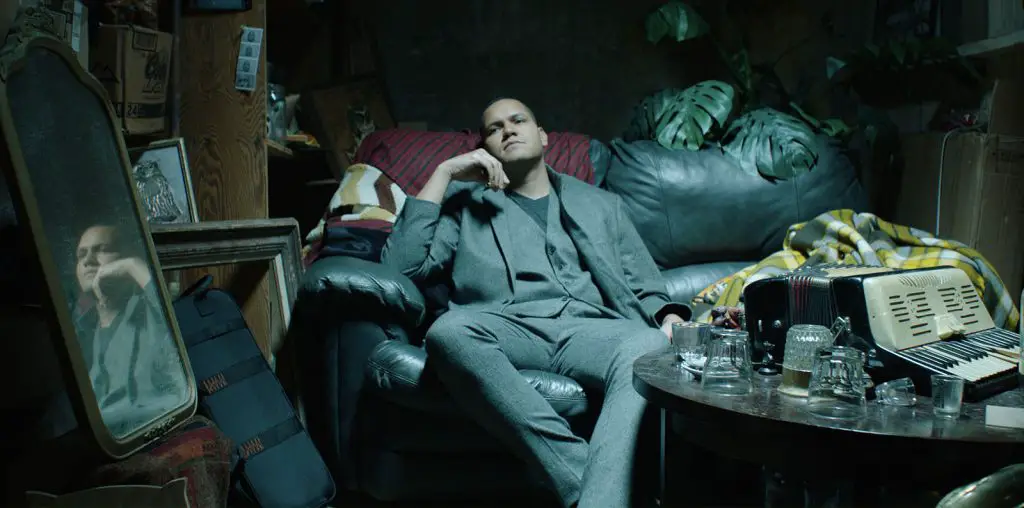
[ PART II: WHY MAKE YOUR OWN SPIDER-MAN MOVIE? ]
[ $400 bucks! That’s insane! So, you wrote, directed, starred as Peter Parker/Spider-Man in your own movie — are you nuts?! ] ^ You must be referring to the effort involved, eh? Well, the story was already written, I just gave some thought as to how to make the serial tale work as a whole, compact piece. Directing is just conveying your vision to the screen and it’s always seemed more like fun to me than anything else. As for me starring in it, I just couldn’t conceive of two different people sharing the role, and I couldn’t find anyone that looked enough like Peter Parker that would do what Spidey had to do. What some consider “nuts”, I look at as passion.
[ Is this the first real film you made? ] ^ I’ve always thought it was funny to consider that I want to be thought of as a “film maker,” but have never shot actual film! I know it’s just a term but a lot of people are real anal about that. I guess I’m one of them! Is this the first movie I’ve ever made? No. Along with numerous short, goofy things I’ve done for fun through the years, I put together two other Spider-man videos. One 20 minutes and another 50 minutes. The Green Goblin’s Last Stand was to be the final effort in a series of attempts to pull off the best low budget Spidey action possible.
[ How did you go about casting the film? ] ^ I took in a lot of local theater. Through friends in the community theater scene, I was introduced to several productions and got to see a lot of talent in these shows. Never did find a decent Peter Parker stunt man, but the night I saw Jimi Kinstle perform in “Scrooge,” I knew he was my man for Norman/Goblin. Too bad I couldn’t pay him to cut his hair, though… ^ I knew that almost everyone did not take my endeavors seriously, so when I went asking around for a pretty blond to be in a low budget video – there weren’t a lot of takers! Enter Allison Adams, who was so excited about being part of it that I didn’t look any further. She was fine, too. Sure, I might look a little harder these days for the perfect Gwen, but Allison did everything I asked of her and did just great. She even let us push her off of a second story rooftop to get the “falling” shot – where are you going to find that?!
[ What comic book is the film based on and did you use it like a storyboard for the film? ] ^ Amazing Spider-Man #121 and #122 are the books, and I tried my absolute hardest to mimic every panel. Of course, things change when you go to shoot, and I couldn’t get on a bridge, but my goal was to bring that story to life straight from the pages that were drawn and written.
[ Can you give me a breakdown of a timeline for making the movie, when you came up with the idea, writing the script, production, completion, first screening? ] ^ In September of 1991, I saw Stan Lee on Good Morning America talking about how Spider-Man was ready to make his screen debut with the help of James Cameron. I got busy right away trying to figure out how I could impress the creator of the Terminator enough to hire me. I began writing that day. ^ The idea was to make an action trailer no more than five minutes in length. I wanted Venom in there. I wanted Doc Ock. I wanted Kraven, Mysterio, Kingpin, The Green Goblin – everybody! I wanted to compile a series of battle footage that would make any fan go nuts. I went to my good friend and master prop maker Eric Supensky with the task of creating a Venom mask and a Green Goblin mask, and the fun began. ^ I suppose within a month I decided that I wanted to go further into the best Spidey/Goblin battle, and shoot more of the surrounding details. It is such a gripping tale. All other costumes and casting stopped and I focused on my new scheme. ^ As 1992 rolled in we had some great stuff shot in costume and were waiting on the bat glider to be built by Don Koch at Center Stage Theater. Location scouting for the warehouse took up much time. ^ Throughout the year I battled location issues, actor schedules, prop needs, effects questions, weather changes and even peer support. By October of 1992 we shot the very last pick up shots on that damned rooftop and I decided that we had everything but an opening. The restaurant scene was the very last thing shot. Editing began the next day at Towson State University. ^ Every day from about noon on into the wee hours of the next day I sat there piecing this thing together. When I had 20 minutes together I took it home to watch and the VCR ate my master tape. When I got the mental faculties to get back in there, I got the final edit done somewhere in mid November. The soundtrack was so incredibly grueling to compile that I still can’t talk about it without being medicated. Suffice it to say that it took a few weeks of real time but I think I paid for it with a few years of my life stress-wise. ^ December 1992 came and there was a small screening with a few close friends at my buddy Jon’s holiday party.
Read The Real Spider-Man Part III: SPIDEY’S SPECTACULAR SPECIAL EFFECTS! Incredible effects rarely seen in such a low-budget production!

